HORST WALBERG TROCKENFRUCHT IMPORT GMBH
Germany
Wholesaler

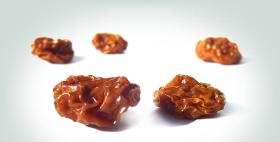
HORST WALBERG TROCKENFRUCHT IMPORT GMBH
Germany
Productinformation Physalis – The fruit of many names. It is also known as Winter Cherry, physalis peruviana, Andean berry, Chinese lantern or Jew‘s cherry. In Germany, however, it is mostly sold under the generic name of physalis. Dried physalis, wonderfully soft to the bite and fruity-sour in taste, offers a special taste experience. Origin Physalis comes from South America and is grown in Venezuela, Bolivia, Chile, Colombia, Ecuador and Peru. Nowadays, however, it is also grown in Africa, India and on the Indonesian island of Java. Other regions include Australia, Kenya, New Zealand, the United States and southern France.
Request for a quote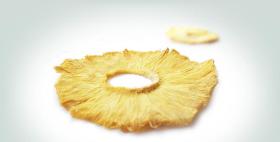
HORST WALBERG TROCKENFRUCHT IMPORT GMBH
Germany
Productinformation Pineapple loops have a quite high degree of dryness, making them very al dente. However, once bitten into, they will unfold an incomparable juicily flavor. You can actually taste the double effect of the sun – first while the fruits are ripening, and the second time during the drying. Highly regarded in indian regions and Sri Lanka, dried pineapple rings start to become more famous all over Europe. Origin The small, aromtic pineapple loops are produced mainly in India and Sri Lanka. In South America, especially Colombia, they are also manufactured as tiny, tasty snacks in ring-form.
Request for a quote
HORST WALBERG TROCKENFRUCHT IMPORT GMBH
Germany
Productinformation In California prunes are harvested between august and october, whereas in South America they are ripe and ready already around march. Prunes get dried in a flue-curing process until their level of moisture reaches fifteen percent. The process of pitting their stones can be handled in two ways: "ashlock pitted" means pushing-out the stone with a thorn, whereas "elliot pitted" stands for removing the stone sideways with several thorns. Last but not least, there are the "ready-to-eat prunes": These come with a moisture up to mellow thirty-five percent. Origin The main producing country are the United States: They have a very large industry branch in California. The second most important distributors are located in South America: Chile and Argentina. European prunes are cultivated mainly in Bordeaux in France, but also in the Balkan States.
Request for a quote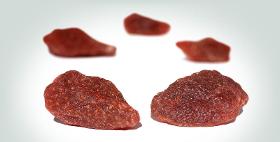
HORST WALBERG TROCKENFRUCHT IMPORT GMBH
Germany
Productinformation Strawberries are part of the rose family. Contrary to its name, the strawberry is not a berry from a botanical perspective, but rather, is an aggregate fruit. Dried strawberries taste sweet, are healthy, invigorating and give one energy. Ingredients Strawberries, sugar, acidifier: E330, coloring agent: E163, preservative: E220 Origin Based on conclusions drawn from archaeological finds, early man was familiar with the strawberry as far back as the Stone Age. It is originally native to Europe and was first cultivated in France and England in the fourteenth century. Today, the main strawberry-producing countries are China, Thailand, the USA, Spain, Japan, Italy, South Korea and Poland.
Request for a quote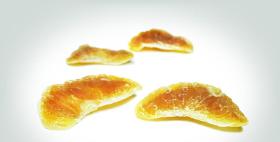
HORST WALBERG TROCKENFRUCHT IMPORT GMBH
Germany
Productinformation The tangerine, also called hesperidium, is the small sister of the orange. It is one of the most diverse citrus-fruit plants due to its form, size and taste. It contains significantly less acid than the orange and has a very sweet taste. The main harvest time for tangerines is between October and January. Due to its complex and high vitamin content, the tangerine is predestined for use in preventative health care. Origin China is the assumed origin of the tangerine. It then spread throughout South-West China to India and reached Europe - England in 1805. From the seeds of the so-called „canton orange“ the Mediterranean tangerine developed. The main growing areas are in the citrus belt, which extends north and south of the equator. The largest growing areas are found in Brazil, China, India and the US.
Request for a quote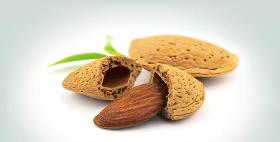
HORST WALBERG TROCKENFRUCHT IMPORT GMBH
Germany
Productinformation Actually, almonds are not really nuts – in a botanical sense they are stone fruits. Almonds are harvested around september and october, whereas in Australia they are ripe and ready around march and april. Once planted, almond trees need four to five years to be fully developed to make a good harvest. Around march almond trees are in full bloom: Having very sensible flowers, the beautiful almond trees can be easily destroyed by sudden frost. Origin Almonds are cultivated mainly in the US, Spain, Italy, Portugal, Greece, Morocco and Australia. The first almond trees were brought from Spain to America by franziscan monks – 200 years ago. The number of plantations increased fast – until today a big industry branch producing almonds is developing in the western region of the US.
Request for a quote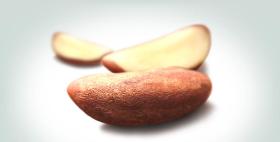
HORST WALBERG TROCKENFRUCHT IMPORT GMBH
Germany
Productinformation Harvesting of the Brazil Nut primarily takes place around november, all the way through march. A Brazil Nut is more than one nut: There can be as far as forty of them inside of a three kilo heavy capsule – which is around the size of a coconut. When these capsules fall off their trees in the amazon region, caution is advised: harvest workers can get badly hurt, if not taking precautions like wearing helmets. The Brazil Nut is a powerful nut on many levels – but primarily in its nutrition value and its powerful taste. Origin Growing areas include South America - Brazil, Bolivia and Peru. The tree of the para nut is native all over the whole amazon region. The trees are real giants of the rainforest: up to three meter in width and up to sixty meters in heighth. They even tower above the thick roof of the tropic rainforest. All atempts to cultivate the para nut tree elsewhere in the world have failed – so with the ongoing expoitation of the rainforest, the Brazil Nut actually is an endangered species of nuts.
Request for a quote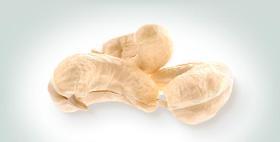
HORST WALBERG TROCKENFRUCHT IMPORT GMBH
Germany
Productinformation Cashew nuts are harvested in India around the time of may and june. The “Kashu” tree derives from the same family of trees as mango- and pistachio-trees. They carry their first fruits approximately after three years - the tree’s maximum carrying capacity is reached after seven years. The cashew tree’s fruit consists of two parts: the cashew “apple” and the actual cashew “nut”, which grows right under the apple part. Cashew nuts are eaten raw in asian regions, but in the rest of the world there are known as a deliciously roasted nut-snack. The cashew apple itself also has a tasty purpose: in the indian market, juices and wine made out of the fruit are very common and popular. Origin India is the major exporting country – especially the national regions of Kerala, Karnataka, Tamil Nadu, Andrdhra Pradesh, Orissa, Maharashtra and Goa. Other countries of origins are Brazil, Mozambique, Kenya, Tansania, Vietnam and Sri Lanka – from America and Africa just over to Asia.
Request for a quote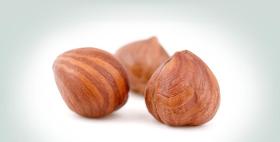
HORST WALBERG TROCKENFRUCHT IMPORT GMBH
Germany
Productinformation The main time for harvesting hazelnuts is around september and october, in Turkey, for example, already around july and august. The hazelnut tree is a long-lived, small shaped tree with round, oval leaves. Contrary to other nut-carrying trees it shows no signs of blossom in spring time: The male flowers are larval-shaped tassels, and the female ones simply small, nearly not visible, buds. Origin Growing areas of hazelnut can be find in Turkey, Georgia, Italy, France, Spain – and the US. The hazelnut’s historical origin is in the Black Sea region in Turkey: From there the nuts were first brought to Rome, from where they were spreaded all over the world. The oldest document of the hazelnut nonetheless can be found in China: The now famous nut was already known there in 2838 b.c.
Request for a quote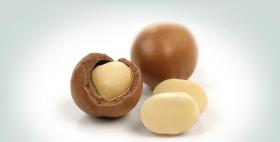
HORST WALBERG TROCKENFRUCHT IMPORT GMBH
Germany
Productinformation The queen of all nuts was discovered by Dr. John Macadam in Australia in 1857 – that’s how she got her name. A few years later, first ship loads were delivered to Hawaii. The pacific island developed a really fast growing, big industry branch in cultivating macadamia nuts. Since then, the majestic tasty nut became more and more prominent. Nowadays Australia remains the second largest industry branch cultivating the nuts, right after Hawaii. Once planted, the nut trees need five years before being able to carry first fruits – their maximum carrying capicity is reached after ten years. The shell of a macadamia nut is really strong – you need special nutcrackers to open them. This is why macadamias are solely traded as peeled nuts. Origin The macadamia’s growing areas reach from Australia – their country of origin – over New Zealand as far as Hawaii. They also can be found planted in South Africa and Kenya.
Request for a quoteWholesaler
Henstedter Straße 21
24629 Kisdorf - Germany